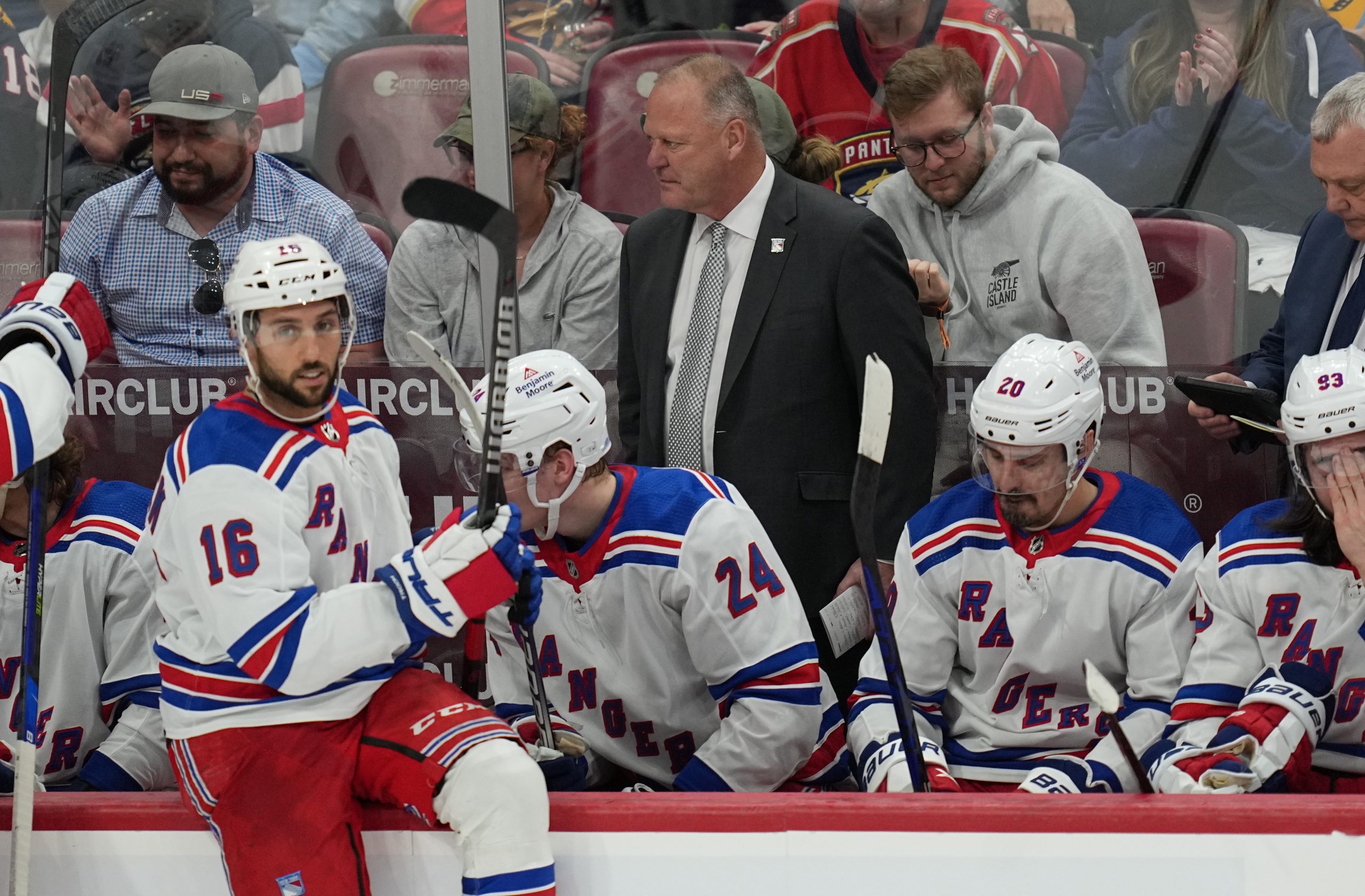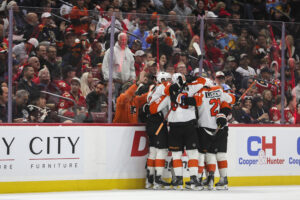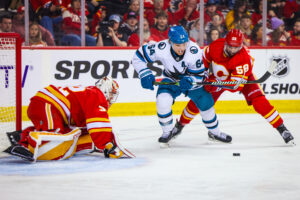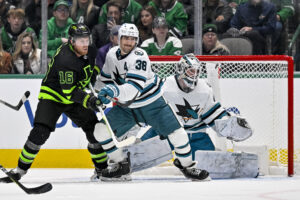Gerard Gallant is having deja vu. After a first-round playoff exit for the New York Rangers, Gallant is once again looking for a job. It’s a situation he’s familiar with. He’s been the head coach of four different NHL teams since 2004. By all accounts, he’s been successful as a head coach. He’s a three-time Jack Adams Award finalist. He won in 2018 after his first season with the Golden Knights. In his most recent stint with the New York Rangers, Gallant improved their win percentage by 15.2% in his first season. However, he went on to get cut a season later. So why can’t he hold onto a job? And why do teams keep giving him one?
NHL Coaching Carousel Is a Symptom of a Larger Disease
Same Mistakes
Of the 32 head coaches in the NHL at the start of the season, 18 had been a head coach of at least one other organization. Eleven had coached at least three different teams. Head coaching positions feel like a league-wide game of musical chairs. The names and faces just seem to rotate, and the trend continues.
Take a look at John Tortorella and the Philadelphia Flyers. Tortorella is an NHL staple, behind the bench as a head coach for the better part of the last two decades. He’s coached at five different organizations, won a Stanley Cup and multiple Jack Adams Awards. He is generally considered to be one of the best. However, his attitude toward players and the media has earned him a reputation as a curmudgeon. It means that he has difficulty connecting with his players, and his teams have struggled with on-ice cohesion, especially in recent years.
Gallant is another example. For years, the offence on Gallant’s teams has dried up in the playoffs. He is unable to make adjustments to create chances for his top players. It was a problem with the Golden Knights, and it was again a problem for the Rangers. Mika Zibanejad, who led the Rangers in the regular season with 39 goals, had just one in seven postseason games against the Devils.
Moving Ahead
Defenders of the NHL coaching carousel will tell you that a great coach is a great coach, and that the same head coach with a different team can make all the difference. To a certain extent, that’s true. Look at Bruce Cassidy with the Vegas Golden Knights this season, Pete Deboer with the Dallas Stars, or even Paul Maurice leading the Florida Panthers to unforeseen success in the playoffs. All three have coached at least three different franchises, and have been successful this season in new positions. However, how many chances is too many? Can you be fired from the same job five times and still deserve another opportunity? At what point is it time to move on?
To be successful, a coach has to be willing to adapt and change their tactics and approach to best suit the team in front of them. When NHL coaches are recycled year after year, it becomes difficult to do so. In a new environment, why not revert to exactly what you’re comfortable with, running the same systems, and the same approaches to the game? For many coaches, the style of hockey they play has become a trademark, something they’re hired to implement in a new team. While bringing in a coach to institute “their” style may bring teams individual success, inevitably, the game itself stalls. With teams just rotating playing styles, no one is doing anything innovative to push the game ahead. It’s a symptom of a more insidious side to hockey and one that has to change if hockey wants to move ahead.
NHL Coaches Show a Larger Problem
Right now, hockey has a culture problem. From the Kyle Beach sexual assault case with the Chicago Blackhawks, to the multiple lawsuits ongoing in the Canadian Hockey League, to teams cancelling Pride Nights amid player reluctance, the sport has had its fair share of recent controversies. The league keeps using words like “culture change”, and has implemented several initiatives like “Hockey is For Everyone” to create conversation and foster inclusion across the league. However, the practices that create an unsafe environment have been passed down through generations.
Stan Bowman and Joel Quenneville are both currently away from the NHL for their roles in covering up the 2010 Chicago Blackhawks sexual assault scandal. They would need explicit permission and clearance from NHL Commissioner Gary Bettman to return to an NHL job. That hasn’t stopped either of their names from popping up as potential replacement candidates for the Pittsburgh Penguins or New York Rangers. While Bowman remains a front-office candidate, the problem is the same.
What Has to Come Next
The coaching carousel encourages stagnancy, a return to what feels comfortable and safe. In this case, the return would be to a culture that covered up sexual assault for a decade. Hockey has to be able to move forward, and it has to be with personnel that the players know they can trust. Recycling coaches is a symptom of a larger issue, but it shows a reluctance to create change, a reluctance to adjust and adapt to a new way of doing things. For both players and fans, the league keeps talking about growth, but their actions show something different.
While Gallant’s inability to capitalize on his offensive structure and Quenneville’s mishandling of a sexual assault case are obviously different situations, the NHL has continued to create an environment where the same mistakes are allowed to be made, without true consequences to those who make them. If the NHL is serious about moving hockey forward, they need to make room for new voices to be heard.
Main Photo: Jim Rassol-USA TODAY Sports






